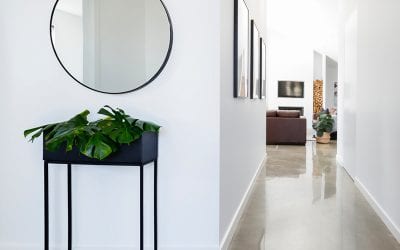Who Builds in Foam? EPS Building System Confidence

Sydney’s construction industry is increasingly embracing the use of quality expanded polystyrene building systems. These lightweight, energy efficient systems are ideal for the renovations, extensions and first floor additions prevalent in the city. Its versatility, cost effectiveness and superior ratings against other building systems in performance, thermal and sound insulation, and numerous other advantages should make it an undeniable option. But how do you promote the idea of building in ‘foam’?
Do you or your client have trouble buying into the concept? Have you had a poor experience with the substrate? Or heard stories? As sustainable construction and 6-star energy rating requirements become more stringent (along with rising energy costs we all want to avoid!) we address the key factors for consideration, taken from credible sources (manufacturers and associations) so you can get on with using a better building system.
Don’t compromise panel quality
There are countless brands and boards with varying degrees of technical properties competing in the market but sourcing an M Grade (medium density) panel is typically considered a good place to start.
Panel size (thickness) is another consideration. Generally panels come in 40mm, 50mm, 60mm, 75mm and 100mm thickness. This allows for design intricacies like build out limitations, composite substrate integration or when the panel is being directly fixed to another substrate and likely to complement preferred attributes. The thicker the panel, the greater the ratings and system integrity. Usually a panel size is selected for independent testings in thermal and sound ratings, impact resistance, Bush Fire Attack Level (BAL) ratings and other critical areas in sustainable building systems. It is worth selecting your board size with these results in mind.
Use caution when finishing pre-meshed boards. From the render system perspective, many coating manufacturers will not warrant the system unless the a mesh is installed within the render application. A quality 165gsm fibreglass mesh should be embedded into the top percentage of the render to behave like reo in concrete and reinforce the system. Without this measure the mesh attached directly to the board may also be at risk of delaminating.
Grooved boards can provide a stronger, more rigid surface, provide a key for render and can achieve increased surface tension and stability across the render system. Grooves on the opposing side of the board can aid in protecting the internal cavity and prevent water from sitting against timber studs.
Don’t compromise on experience
Engage tradespersons experienced in expanded polystyrene systems. Incorrect installation and poor construction detailing are the direct cause of any documented issues, particularly concerning moisture penetration. It is no different or any more difficult to follow good trade practices, recommended installation methods and defined sealing procedures than any other building system. It is essential that expert design be applied for the correct integration of the system with other components of the building. Even the most qualified are best not to make assumptions in the installation of any new building system. The industry is ever-evolving and good tradies recognise on-going professional development is essential in keeping abreast of new products entering the market and seek authorities that can supply the information they need.
Consider using a contractor that specialises in installing both the board and the render system. There are experienced teams around that do the full system. Often this is a good bet for a quality, stable installation because they are the ones that also have to coat it! Since the render system is an integral component of the building system itself (the panel would not exist without it), applicators have much insight into correct installation and sealing methods.
Don’t compromise the render system
The full specified render system forms part of the system integrity. A sponge finish render with an ordinary external house paint is insufficient for the durability and technical properties required for the long term. It is imperative that the correct manufactured render, designed specifically for this substrate is used. It is then reinforced with the recommended alkali resistent mesh. The render application can be either primed and over coated with a proven decorative texture product or sponge finished and painted with a proven coloured membrane/protective coating. The top coat must have a superior elastomeric (flexible) value to protect the system adequately and bridge the effects of ordinary building settlement. Like all render systems over any substrate, specific location variables (close to salt air, water, and other environmental/geographical factors) should be accounted for when considering the ideal coating requirements. The colour choice for the texture and/or protective coating should also have a Light Reflective Value (LRV) no darker than about 40% LRV. Dark colours exposed to direct sunlight may impact on the coating system due to the entrapment of excessive heat within the panel insulation. The myriad of colours available to select within the recommended parameters makes this a minor limitation but is often not explained.
The difference between a coffee cup & packaging polystyrene
Finally, ‘foam’ is a pretty simplified term for a pretty sophisticated product. We are not talking takeaway coffee cup foam. Polystyrene products are used for shock absorbance, impact resistance and protection in packaging. It’s closed cell structure and water resistant characteristics make it perfect for marine buoys. EPS panels are a proven and successful building system with these attributes and more. Observe substrate specific considerations such as those discussed here and responsible trade practices and take advantage of a system that ticks more boxes than most.
